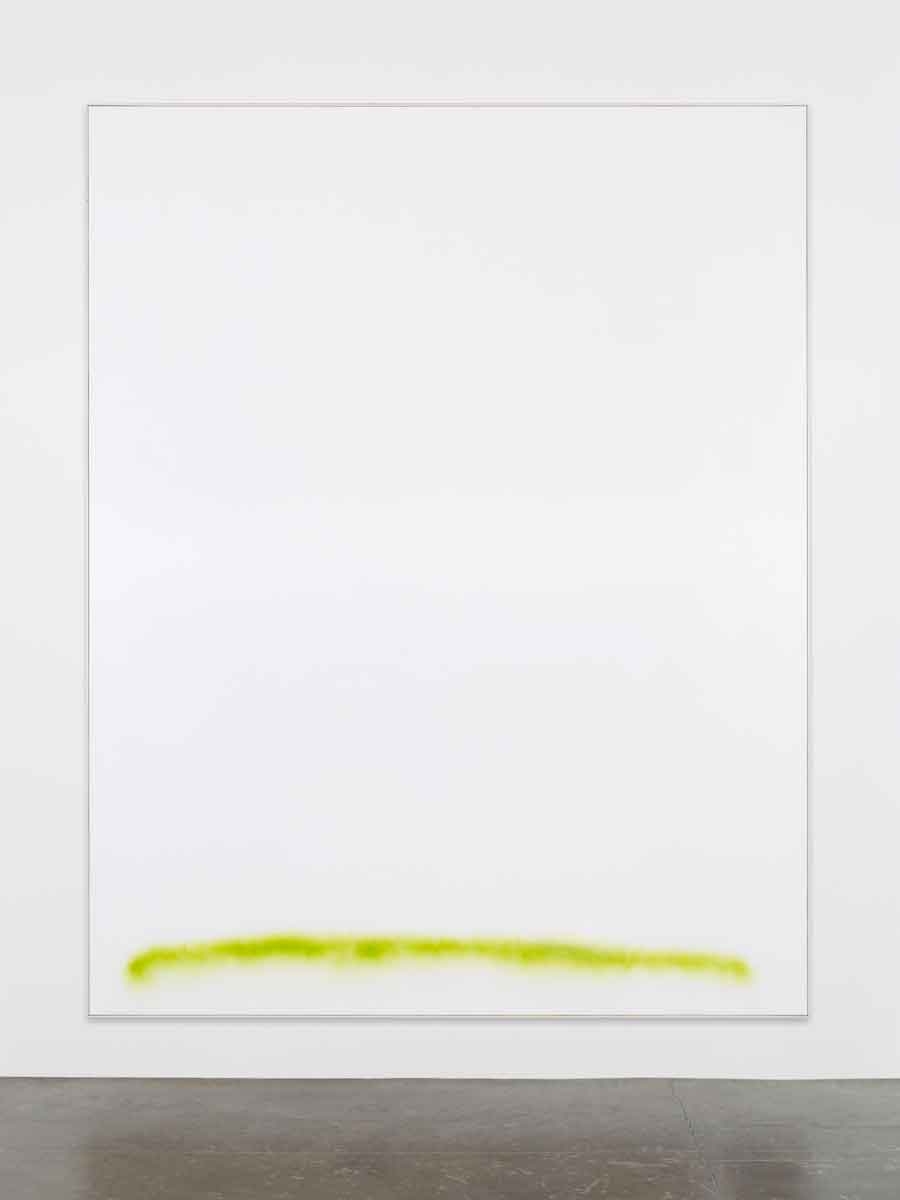Debates about contemporary painting often get caught up with the idea of ‘endgame’ painting. A term borrowed from chess for that point in the game where there are only a few possible moves left. It’s that point where I tend to sweep the pieces off the board in a fury and storm out of the room. I’m not very good at chess, and I usually lose. But the moment when an unwinnable game gets swept away might also be the beginning of something new – a clean slate, tabula rasa.
Maybe one senses a similar mix of frustration and elation in German painter David Ostrowski’s canvases, which present you with a variety of just-enough-to-notice, bare-minimum interventions on large, uniformly portrait-format canvases, each precisely 241 by 191 cm. These aren’t ‘painterly’ interventions, they’re attempts to boil things down to unpainterly essentials: paper sheets collaged loosely into strips across the canvas; what looks like paint spray-gunned in arcs and scribbled blocks; and in F (Auch die schönste Frau ist an den Füssen zu Ende, Elena’s Feet) (all works 2013), nothing more than the smudged print of a human foot, bottom left corner.
Everything, then, is calculated to escape the confines of gallery-painting convention, trying to point, all the time, to a less compromised world; so the spraypaint gestures to graffiti, likewise the collaged paper implies posters, flyposting and the rough scene of the urban street. This might make more sense in the light of earlier works by Ostrowski, in which the urban world and its inhabitants make more of an appearance, and in which the artist plays out a more energetic, messy hybrid of cave-painting clichés and graffiti figuration. But here things are muted, kept tasteful, minimal and a little bit beige.
It’s a weird tension, this mix of stripped-down asceticism and pent-up anarchy. Pointing outward, to nonpainting tropes such as the ‘canvas of the street’ or readymade gestures such as the footprint, these works suck in the art-historical references, without necessarily meaning to: the spraypaint and collage draw one back to Antoni Tàpies’s later ‘mural’ paintings, the footprint might recall some Yves Klein-like Anthropometries body-print false start. But the levels are turned down: the upturned sprayed curve that marks F (Don’t Honk) looks like nothing so much as a cartoon closed-eyelid – a sleeping painting.
Among these are more haughtily ‘endgame’ paintings: four white-grounded canvases whose only motif is a painted stripe or two that runs around the edge of the canvas: black, acidic orange, black with acidic orange and black with greeny-yellow. Such gestures might have been extreme once, but now they feel domesticated. Maybe that’s not Ostrowski’s fault. But… wanting to strip things back, open the door to the supposedly fresher air outside, keep it real – such intentions suppose that authenticity (or even the ‘beauty’ that Elena Brugnano, in her gallery text, supposes is present in Ostrowski’s paintings) is only to be found in actions and gestures that are spontaneous, unthought and unmediated. It’s just the ‘only’ that doesn’t quite ring true.
This article was originally published in the March 2014 issue.
